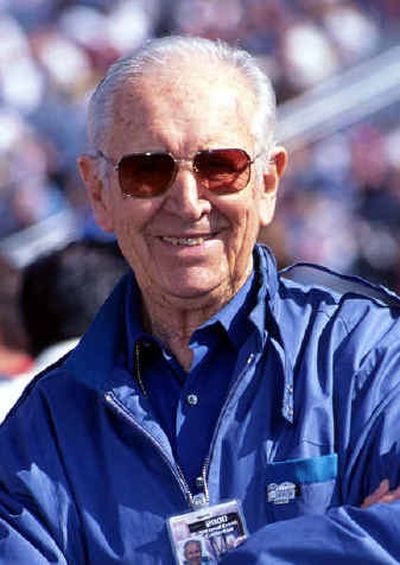An interview with NHRA founder Wally Parks

Wally Parks was the single driving force behind the formation of the National Hot Rod Association back in 1951. Now, the NHRA boasts 85,000 members worldwide and sanctions more than 4,000 events annually.
Parks will celebrate his 92nd birthday on Jan. 23, but you’d never know his age by interacting with him. Sharp-witted and fully devoted when the talk is motorsports, Parks is regarded as the godfather of drag racing. He and his wife, Barbara, reside in Glendale, Calif.
***
ZYLA: Wally, when the NHRA was founded, Hollywood was producing movies like “Drag Strip Girl,” “Hot Rods to Hell” and other titles that were very negative to any type of hot rodding. Daily newspapers routinely blamed “drag racing” for highway accidents and juvenile delinquency, and here you come trying to promote a new drag racing organization to get the kids off the street. How difficult was it turning that sentiment around during the founding years?
PARKS: It was a big problem. But to our advantage, the problem itself was also the incentive for us to move forward. There was an awful lot of negative press in those days, along with the movies you mention, and its primary cause was street racing. We had the same problems with running our events at the dry lakes out here with the SCTA (Southern California Timing Association). However, reversing the public negativity has always been a goal and target for us by showing the other side of the coin and the benefits of a safety-oriented program.
ZYLA: My first drag race was 1958, and what impacted me the most was the factory involvement that occurred from 1961 through 1966. I saw all of the drivers and their factory-built Super Stock cars, and the stands were packed each week for match races. Do you think this was the turning point for the NHRA?
PARKS: Yes. We introduced our new Super Stock-class at Detroit (Dragway) and ran there in 1959 and 1960. By 1962, these Super Stock cars evolved into top-of-the-line attractions for the fans, who could go into the showroom on Monday and basically buy the same car that won on Sunday. Whether it be a 409 Chevy, a 413 Dodge, a 406 Ford or a 421 Pontiac, it was available, and in most cases sitting right there on the lot. The Super Stock class ignited the fans and attracted the attention of the American automobile industry. While Detroit was building drag-specific cars, it led into the huge Muscle Car era and the continued “Win on Sunday, sell on Monday” scenario.
ZYLA: I understand you’re a big fan of Sport Compact drag racing?
PARKS: Yes. The Sport Compact Class and the drivers have far more maneuverability than we had with our early-day hot rods. Consequently, while they stimulate the same desire for owners to modify them, we’re again faced with the same old problem of street racing. And, as you noted, that was the exact same problem we faced when we formed the NHRA back in 1951. Thus, we find we have an opportunity to provide safer forms of activity and to try to encourage the owners of these cars, which are primarily younger people, to come out and run their cars in competition in lieu of running on the streets
ZYLA: Attendance is up at NHRA PowerAde national events. Any comments?
PARKS: When people see two top fuelers lined up with 14,000 combined horsepower just waiting for the green to blast off, it sure adds to the variety of entertainment we provide to the motorsports fan. Every motorsports fan can appreciate it, and it draws the new fans back again.